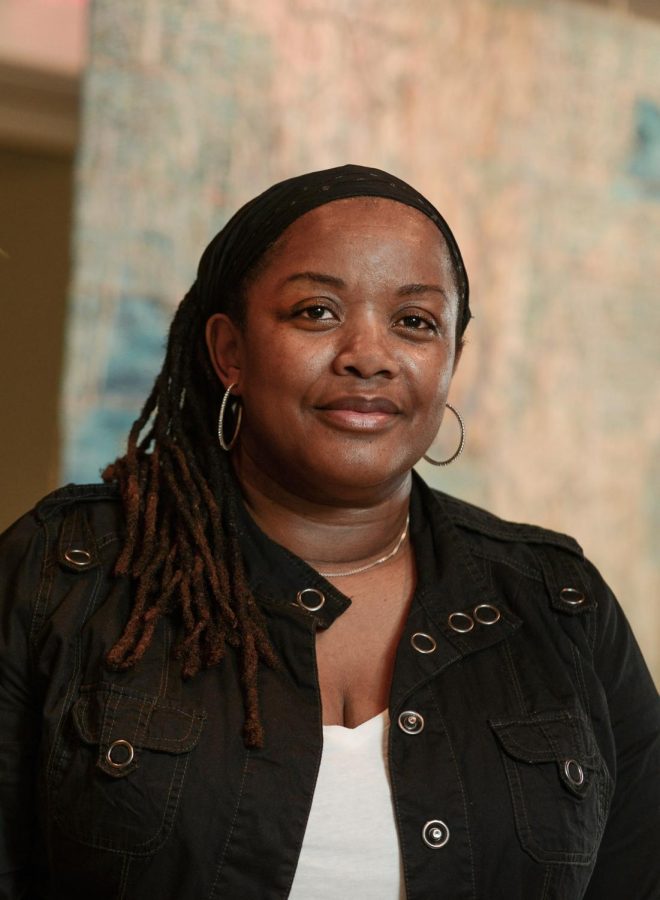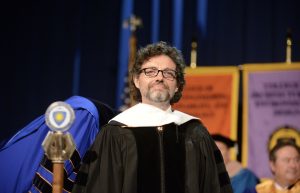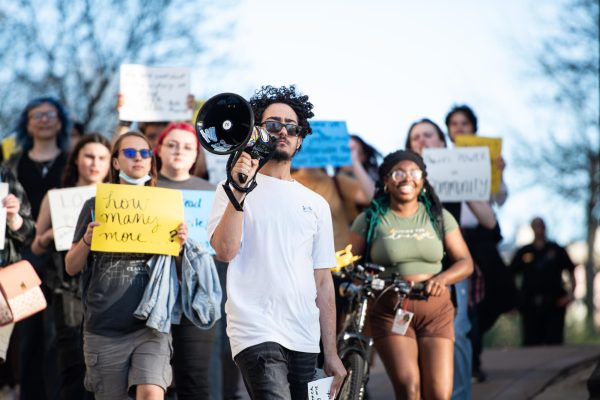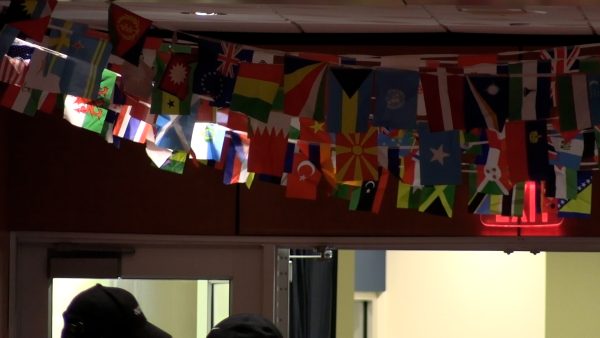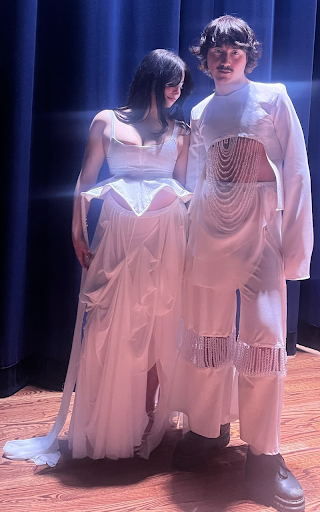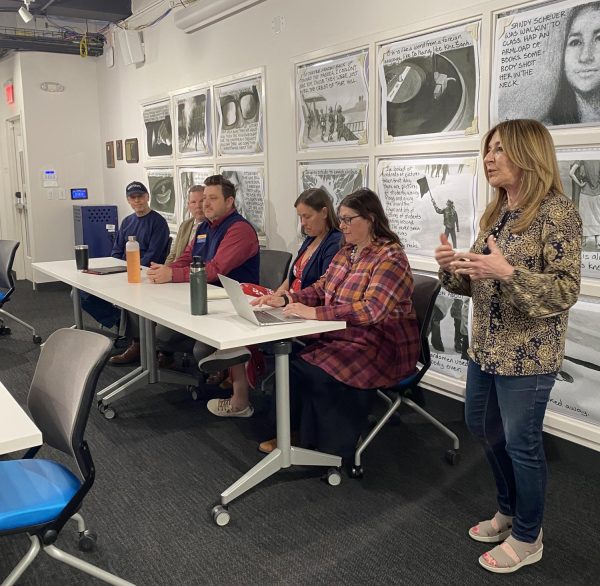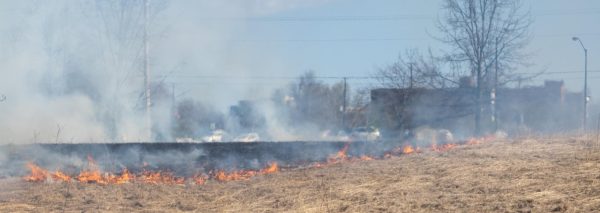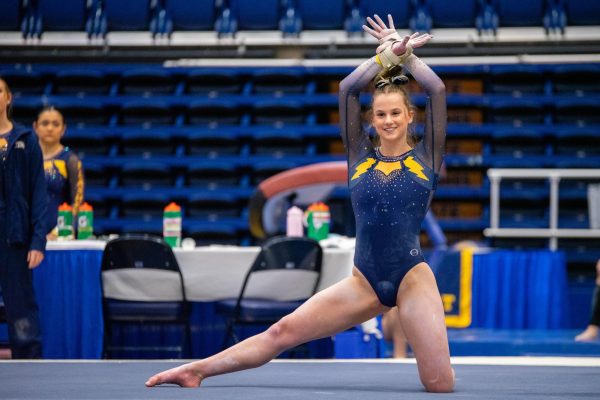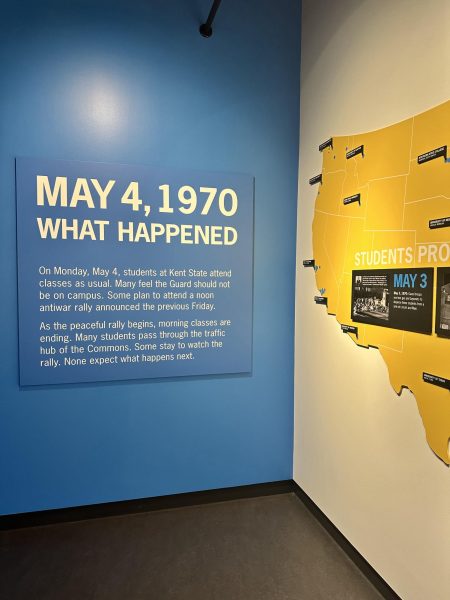Q&A with Amoaba Gooden
Headshot of recently appointed Interim Vice President of Diversity, Equity and Inclusion, Amoaba Gooden.
May 19, 2020
Amoaba Gooden, who has a doctorate in African-American Studies from Temple University, was recently appointed Interim Vice President of Diversity, Equity and Inclusion at Kent State. KentWired sat down with her to talk about her new position and plans for the future.
Gooden’s academic achievements include: a Bachelor of Arts in History; a Master of Arts in History, a Master of Arts in African-American Studies; a certificate in Women Studies; and a doctorate in African-American Studies.
Q: What is the position of Interim Vice President of Diversity, Equity and Inclusion?
A: It means that you are part of the president’s leadership team. And so the focus of the portfolio then for diversity, equity and inclusion is to assist and to work with various parts of the university community, staff, faculty, students and other leadership team members around issues of diversity, equity and inclusion.
Q: What exactly would you be doing in this position?
A: The way that the previous vice president worked is that she worked very closely with faculty, students and staff, and various programmatic or strategic planning initiatives for the university. Certainly this position in particular would want to meet the students needs of the different population. Those needs, of course, are determined by the students but also by things that I might observe.
Q: What are your plans for being in this position?
A: Right now, I think the first step is really just to observe, assess the unit and really just kind of read through documents. The unit has done some phenomenal, wonderful work prior to me coming into this position. So really just to become very familiar through reading the materials, about the unit itself to really talk to the staff about where they want to go, to be in relation and to collaborate and have conversations with the staff about their division, but also to do that with the rest of the campus community. So the early stages are really kind of observation and assessment.
Q: Has the coronavirus affected the early-on steps for you?
A: Certainly it has because all the work is done remotely. This provided an opportunity to still meet with people using [Microsoft] teams, or through Zoom, so we have board meetings quite regularly.
Q: While you are able to work with the staff still, even with the coronavirus, are you able to connect with students more? Or has it become a lot more difficult for you?
A: We’re at a period where it’s summer break. So I still have the opportunity to meet with staff and faculty, and maybe not so [many] students. But what I’ve done as I kind of tapped into and have made a list, and I’m really looking through the various organizations or groups that I need to reach out to. I’ll begin doing that fairly soon.
Q: So, in theory, because the coronavirus pandemic happened toward the end of the semester, you are still on track because of the summer break?
A: Yeah, there really wasn’t a disruption. But I must say, though, that I think just the Kent State community’s use of technology and various platforms to communicate has been really helpful.
Q: In the fall semester, what are your plans?
A: Because I’ve just started I’m just really thinking through what that might look like. Certainly, what’s really important for me is for me to kind of build strong relationships with individuals in groups. So one of my early steps is really just getting to know people in a different way. You know, I certainly knew them as the chair of the Department of Pan-African Studies, but in this new role, I’m certain people have expectations and understandings that might have not been privy to before. So really getting an understanding of people’s expectations of the division, building relationships and also maybe putting together some groups that could help me think through expectations around what they think about in terms of DEI.
Q: What were some of the positions you’ve had in the past?
A: I am, and actually continue to be for a little time, the chair of the Department of Pan-African Studies and I have been the chair for the past seven years. I’m an associate professor in the department. I’m also a part of a digital humanities collaborative, which I’m really proud of and that involves faculty members from all across the campus.
Q: How have the positions helped you build your skills and understanding to be where you are now?
A: In a couple of ways, certainly teaching and research is really important to me as well as service. So all of these positions have afforded me time. So I’ve sat on various committees on campus; I’ve really gotten to know various individuals, organizations and groups on campus. I think that will help me in this position. Also, it’s given me a really good platform for building on what I was already doing. As you know, the Department of Pan-African Studies is really diverse, so I think this will give me another platform to continue what I value, which is really to make Kent State continue to be diverse, inclusive and equitable.
Q: What are you most excited for this position?
A: I’m really excited to work with the campus community. I think oftentimes when an individual thinks of units or divisions, one might imagine that they’re working in silo. So what really excites me about DEI in particular is to begin to work with various divisions and units across campus so that we can think of diversity, equity and inclusion as not only the responsibility of one division but actually the responsibility of Kent State.
Q: How will you work with students and student organizations?
A: I think what I’d like to do is, actually in conversation with the students, work with them and listen to some of their concerns and their needs, and try and address it as best not that as I can, but really work with the rest of the division so that we’re addressing the needs of the students. I wouldn’t want to say that I’m going to decide what the students need. I think students, because they’re the experts of their own experiences, actually then could lead us and really kind of guide us in terms of how we can help them.
Q: What are the different divisions under DEI?
A: Right now under DEI would be the Student Multicultural Center, SRVSS [Sexual and Relationship Violence Support Services], Women’s Center and the LGBTQ+ Center.
Q: How has each of the divisions worked throughout the coronavirus?
A: So all the directors are still working and each of the divisions have programs that they’re working on. The Women’s Center for example, has been really integral and engaged with the Campus Kitchen, really kind of working along with the LGBTQ+ Center and the SMC. So all the divisions have really worked to make sure that our most vulnerable student populations—that their needs, particularly food insecurity and housing—are taken care of. So they do individual reach outs. I know that Cassie, for example, who is the director of the Women’s Center, works in the Campus Kitchen; she does a couple days of the week. Each of the centers is doing something uniquely different.
Q: What can we expect to see within the next few months out of DEI?
A: I think what you could expect to see is kind of a refocusing and a reframing of the strategic initiatives, and really what that means is decentralizing the work of diversity, equity and inclusion across the campus.
Editor’s Note:
A more detailed description of Gooden’s academic credentials was added to the introduction.
Contact Sara Crawford at [email protected].


